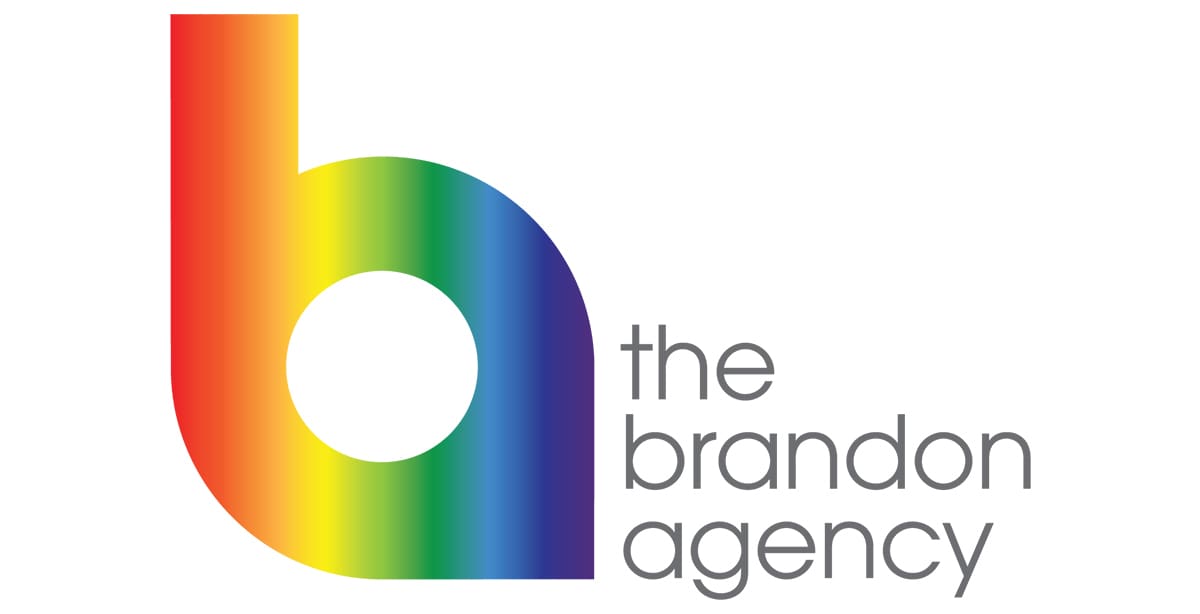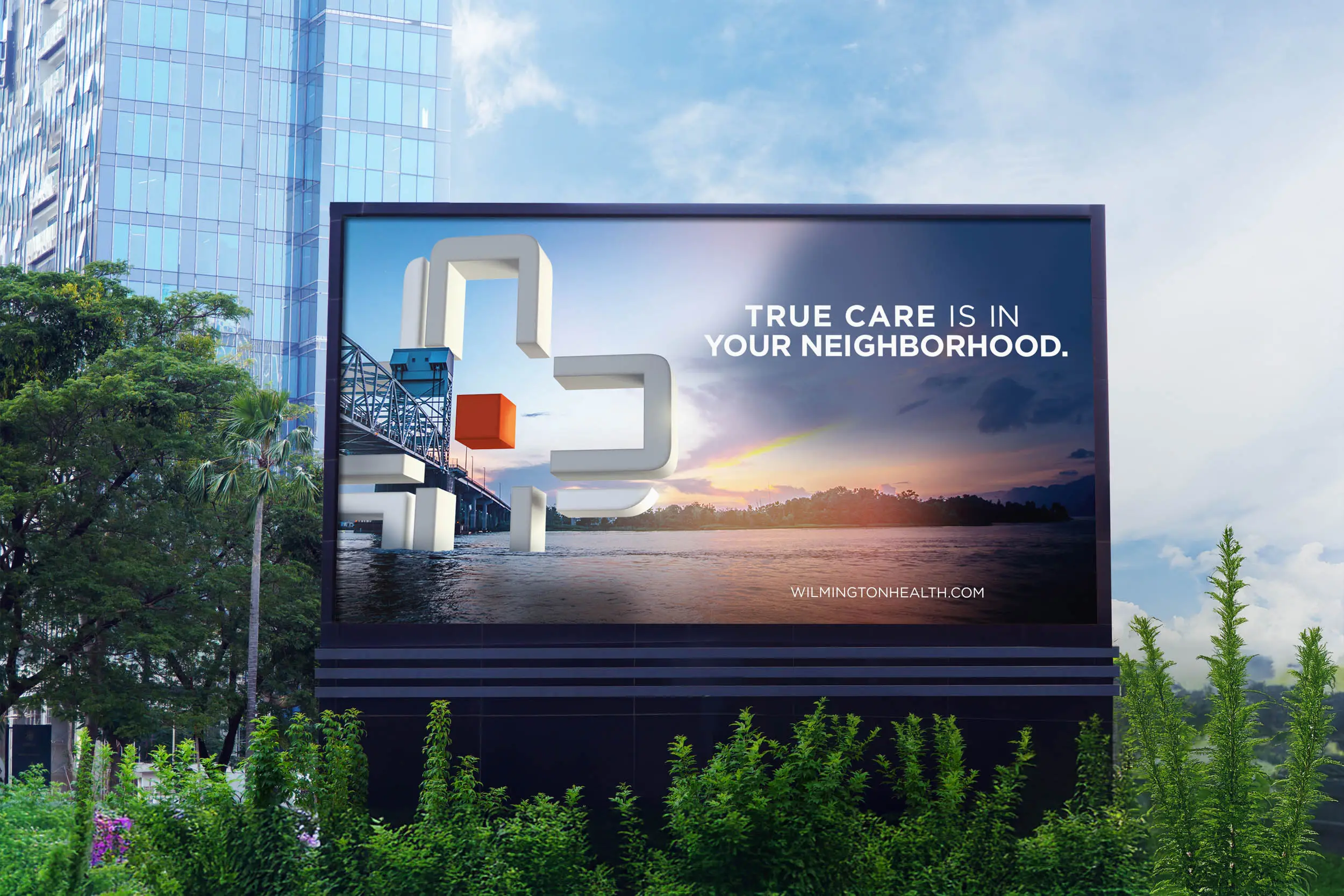
During Pride Month, a spectrum of colors has infused corporate logos from LinkedIn to Madison Avenue. From box stores, social media, and small businesses, support flows with flying colors. At least, that’s what it looks like from the outside.
A united stance to honor and protect a cause and fellow workers everywhere feels like the right play. But skepticism remains. How much is for the look, and how much for a shift in outlook?
The Brandon Agency decided to alter its logo in support of Gay Pride Month this June. The choice was more than a task for the art department to give the iconic B a multi-colored makeover. Altering the outward appearance without mindful introspection would be a great disservice.
So what’s the difference between outward participation and genuine engagement to support the LGBTQ+ community, at large and within our company?
First of all … what is Pride Month?
Let’s back up a step or two. First, to address the initialism, LGBTQ+. It stands for lesbian, gay, bisexual, transgender/transexual, and queer people. The plus sign encapsulates many other communities, such as intersex, asexual, and ally — for straight people who support and advocate for LGBTQ+ voices.
As for Pride Month: It’s to commemorate the Stonewall Uprising of 1969. The response to police violence against the gay community that weekend in Manhattan became a sentinel moment for equal rights and unfair policy. The advancement of the gay liberation movement from that event fueled modern-day progress for LBGTQ+ rights.
In a nightclub where the LBGTQ+ community had a safe yet terse place to congregate, the uprising happened in Greenwich Village. People at that time could face arrest for wearing clothes associated with the opposite gender. Escalating police violence against the community sparked a riot over several days that led to historical implications.
Marches to protest inequalities rose from this event, and eventually to policy change.
What has it become since Stonewall?
What began as a march became a week of demonstrations and events. Now, Pride Month contains many events, plus creative recognition for the LGBTQ+ community. Concerts, parades, parties, picnics, symposia, workshops, and more comprise the celebration. Also, we pause to remember those lost to hate crimes or HIV/AIDS during memorials in Pride Month.
What is there to celebrate?
Pride is important, within the LBGTQ+ community and outside it, because of visibility. Despite promising progress, there still exists a sense of dread for some in revealing who they truly are. Some whom we share a community with are subject to unfair treatment still.
The inclusive atmosphere present in parades and rallies has extended to Pride Month. Yet, that isn’t far enough. There are 11 more months of the year to account for, after all, and although June will end, the struggle will continue.
It’s not only about acceptance or tolerance. It’s about LBGTQ+ people’s impact on history, locally, nationally, and globally, and recognizing such.
So what’s the problem?
Pride capitalism and rainbow-washing undermine the movement. It’s the notion that some companies use LGBTQ+ allyship for commercial gain without action to support the community. Organizations can revamp a logo and rehash memes and language to create a mirage of support, but are they practicing principles inherent to true change in the workplace and commerce?
The disconnect can happen out of ignorance or oversight. Some, though, can appear as exploiting the awareness of a community without the intention to support it.
Love is love — unless, of course, it isn’t.
Service networks and hockey clubs have decked out their logos in rainbows. We all must consider what social responsibility comes with the change, though. Especially in advertising, we can impact what our clients and their customers see.
It starts with human resources policies. Are they diverse? Does a company have intersectional representation among directors and leaders?
If not, is there at least a plan in place to achieve it?
So what is The Brandon Agency doing?
For us, it’s more than checking boxes. It’s integrating culture and educating our team, truly empowering everyone with a voice. In believing their contributions matter.
Senior creative members took part in 4As Learning Academy training on diversity this year. Then, all employees took part in the training.
Our commitment extends not only to how we see ourselves, but how we present ideas to our clients. We’ll hold each other accountable for more inclusive content, reflected in work deemed more relatable to targeted audiences. That means holding clients accountable for the same inclusive values.
Self-examination covers a wide range of diversity and shifting ideals. To tolerate discrimination from clients is to undermine our own efforts to empower.
Conversations must be ongoing. Diversity runs deep, and we’ve changed policies to reflect an awareness of shortcomings. Policies for bereavement and paid family medical leave had to adapt to changing times.
What about inclusion?
In early 2020, we saw the chance to open a discussion of inclusion in our agency. Despite awareness of issues, we weren’t very diverse. This issue reaches advertising agencies at large, but the change we can effect begins within.
So we set out to do what we could to change the face at The Brandon Agency — and so the Diversity and Inclusion Committee was born.
The goal: To create an action plan for better diversity, guidance, and education. To foster open discussion to diversify our agency, built not of what we felt society was doing, but by what we felt was the best direction for our agency to take. Our areas of concern:
- Age
- Disability
- Faith
- Gender
- Race
- Sexual identity and orientation
Our website is getting a refresh, too. What good is an inviting workplace that isn’t reflected in imagery and language? We’re working to complete training for 4A’s inclusivity and diversity certification, and the effort to nurture a culture of inclusion happens every day, at all levels.
To incorporate inclusion, not just the illusion of it, takes constant re-examination. Of our work. Our objectives. The way we’ll measure success.
Our ethics must encompass external and community objectives, internal initiatives, and recruiting philosophy. Because Pride Month is just the start.
By subscribing to our newsletter, you agree to our Privacy Policy.




